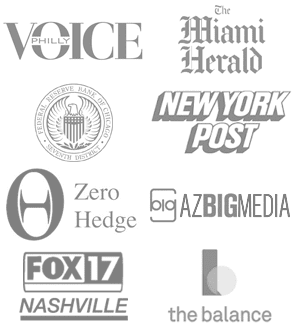Refinancing a home can be a powerful financial tool, allowing homeowners to adjust their mortgage terms, reduce monthly payments, or tap into home equity for other purposes. Many homeowners ask us: how many times can you refinance a house? It depends on various factors, including mortgage lender policies, financial goals, and market conditions. Let’s explore the nuances of home refinancing, the factors that influence how often you can refinance, and two real-world case studies to illustrate the process.
Factors Influencing Home Refinancing Frequency
There is no legal limit to how many times you can refinance a house.
As long as you meet the lender’s requirements and the financial benefits outweigh the costs, you can refinance multiple times over the life of your homeownership.
However, several practical considerations determine how frequently refinancing makes sense.
1. Refinance Lender Requirements
Lenders impose specific criteria for refinancing, including credit score, debt-to-income (DTI) ratio, and loan-to-value (LTV) ratio. Most lenders require a minimum credit score of around 620 for conventional loans, though higher scores may secure better rates. Additionally, refinance lenders often prefer that homeowners have at least 20% equity in their home. Some lenders also enforce a “seasoning period,” a minimum time you must hold your current mortgage before refinancing—typically six months to a year for certain loan types, such as FHA or VA loans.
2. Financial Costs
Refinancing isn’t free. Closing costs, which include appraisal fees, title insurance, and lender fees, typically range from 2% to 6% of the loan amount. For a $300,000 mortgage, this could mean $6,000 to $18,000 in upfront costs. To make house refinancing worthwhile, the savings from lower interest rates or reduced payments must offset these costs. A common rule of thumb is that refinancing makes sense if you can lower your interest rate by at least 0.5% to 1% and plan to stay in the home long enough to recoup the costs.
3. Market Conditions
Interest rates fluctuate based on economic conditions, and these changes heavily influence home refinancing decisions. For instance, if rates drop significantly, refinancing can reduce monthly payments or shorten the loan term. Conversely, if rates rise, refinancing may not be advantageous unless you’re pursuing a cash-out refinance or need to adjust loan terms for other reasons.
4. Personal Financial Goals
Your reasons for refinancing play a significant role. Some homeowners refinance to lower monthly payments, while others aim to pay off their mortgage faster by switching to a shorter-term loan. Cash-out refinancing might be used to fund major expenses, like home renovations or education costs. Each home refinancing decision should align with your long-term financial strategy, and frequent refinancing may be justified if it supports those goals.
5. Impact on Credit
Home refinancing requires a hard credit inquiry, which can temporarily lower your credit score by a few points. Multiple refinances in a short period could amplify this effect, potentially making it harder to qualify for favorable terms. However, if you maintain good credit habits, this impact is typically minimal and temporary.
How Often Can You Refinance?
There’s no universal cap on refinancing frequency, but practical constraints exist. Home refinance lenders may impose waiting periods, especially for cash-out refinances or government-backed loans. For example, FHA loans require a 210-day waiting period before refinancing, and some conventional loans may have a six-month seasoning requirement. Additionally, refinancing too frequently can lead to diminishing returns if the savings don’t justify the costs.
A general guideline is to wait at least 12 to 18 months between refinances to ensure you’ve built sufficient equity and can cover closing costs. However, in a rapidly changing rate environment, some homeowners refinance sooner if the financial benefits are clear.
Case Studies
Case Study 1: Lowering Interest Rates
Background: Sarah, a 35-year-old homeowner in Austin, Texas, purchased her home in 2018 with a 30-year fixed-rate mortgage of $350,000 at 4.5%. By 2021, interest rates had dropped to historic lows, averaging around 3%.
Refinancing Decision: Sarah decided to refinance to a new 30-year mortgage at 3% to reduce her monthly payments. Her original monthly payment was $1,773. After refinancing, it dropped to $1,475, saving her $298 per month. The closing costs were $8,000, meaning she’d recoup the costs in about 27 months ($8,000 ÷ $298). Since Sarah planned to stay in her home for at least 10 years, the refinance made sense.
Second Refinance: In 2023, Sarah’s income increased, and she wanted to pay off her mortgage faster. She refinanced again into a 15-year mortgage at 3.5%, with closing costs of $7,500. Her new monthly payment rose to $2,144, but the shorter term would save her over $100,000 in interest over the life of the loan. By refinancing twice, Sarah first reduced her monthly burden and later accelerated her path to being mortgage-free.
Key Takeaway: Sarah’s case shows that refinancing multiple times can align with evolving financial goals—first to save money monthly and later to pay off the loan faster.
Case Study 2: Cash-Out Refinance for Home Improvements
Background: John and Maria, a couple in Seattle, Washington, bought their home in 2019 for $500,000 with a 30-year mortgage at 4.25%. By 2022, their home’s value had risen to $650,000 due to a hot real estate market, giving them significant equity.
Refinancing Decision: They opted for a cash-out refinance to fund a $50,000 kitchen renovation. They refinanced their remaining $450,000 balance into a new $500,000 loan at 3.75%, withdrawing $50,000 in cash. Their monthly payment increased slightly from $2,459 to $2,315 due to the lower rate, and closing costs were $10,000. The renovation not only improved their quality of life but also increased their home’s value to $700,000.
Second Refinance: In 2024, with rates still favorable at 4%, John and Maria refinanced again to consolidate high-interest credit card debt ($20,000 at 18%). They took out a new $520,000 loan, paying off the credit card debt and their existing mortgage. The new monthly payment was $2,480, but they saved $300 monthly by eliminating the credit card payments. Closing costs were $9,000, recouped within three years through debt consolidation savings.
Key Takeaway: John and Maria used refinancing strategically to leverage home equity for renovations and debt consolidation, demonstrating how multiple refinances can address diverse financial needs.
Practical Considerations for Refinancing Your House in 2025
Before refinancing, evaluate the break-even point—the time it takes to recover closing costs through savings. Use a refinance calculator to estimate this. Also, consider your long-term plans. If you plan to move soon, refinancing may not be worth it. Consult with multiple lenders to compare rates and fees, and ensure your credit and financial profile meet their criteria.
There’s no set limit to how many times you can refinance a house, but each refinance should be driven by clear financial benefits. Factors like lender requirements, closing costs, market conditions, and personal goals determine the feasibility and frequency of refinancing. As illustrated by Sarah’s and John and Maria’s case studies, multiple refinances can be a strategic tool to save money, access equity, or achieve other financial objectives. Always weigh the costs against the benefits and consult with a financial advisor or lender to ensure refinancing aligns with your goals.

